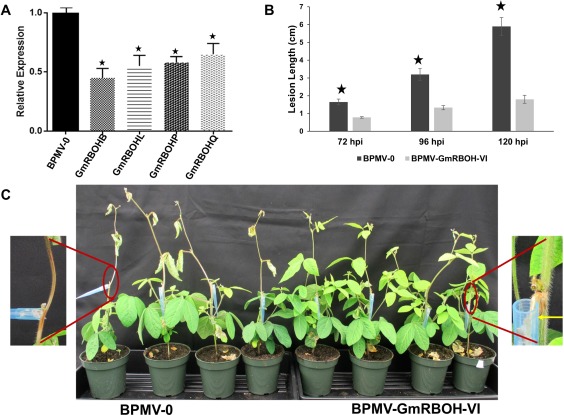Figure 5.

Silencing of GmRBOH‐VI leads to enhanced resistance to Sclerotinia sclerotiorum. (A) Silencing efficiency of GmRBOH‐VI. The first true leaves of 10‐day‐old soybean plants were used for the biolistic delivery of the Bean pod mottle virus (BPMV) constructs BPMV‐0 (empty vector control) and BPMV‐GmRBOH‐VI. The silencing efficiency was calculated by comparing the transcript levels of each GmRBOH‐VI gene in BPMV‐GmRBOH‐VI virus‐induced gene‐silenced plants with the corresponding levels in BPMV‐0‐infected plants. Lesion length (B) and disease symptoms (C) following petiole inoculation with S. sclerotiorum. Lesion lengths were measured from 72 to 120 h post‐inoculation (hpi) (B). At 120 hpi, the control plants were completely wilted in contrast with BPMV‐GmRBOH‐VI‐inoculated plants (C). Eight plants were used for each of the three biological repeats. Data are presented (A, B) as the mean ± standard deviation (SD) from three independent experiments. ⋆, Significant difference at the P < 0.05 level. Yellow arrow shows red discoloration at the edge of the lesion.
